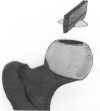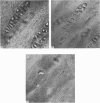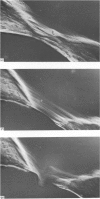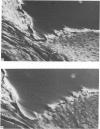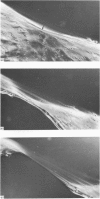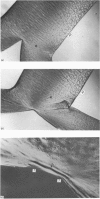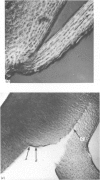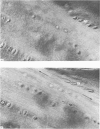Abstract
A new experimental technique involving the observation of an artificial notch propagating through articular cartilage has been used to examine the biomechanical properties of this tissue. By predetermining both the orientation of the notch and its location with respect to the primary functional zones a more rigorous description of the structure/function relationships in cartilage has been achieved. The principal findings are: A primary 'strain-locking' role for the superficial zone has been demonstrated experimentally in articular cartilage. Comparison of the behaviour of radial and transverse notches has revealed a primary structural anisotropy in the general matrix. This is strong evidence in support of the morphological model proposed in a recent paper by the present author. A range of mechanical responses is shown to be reflected consistently in structural features considered to arise principally from variations in the degree of crosslinking between the overall radial configuration of collagen fibres. It is possible to separate mechanically the collagen fibres from the general matrix and the bonding relationship between them is time-dependent. Measurement of loads required to propagate a radial notch suggest (a) that the strength of the fibres and/or that of the crosslinks between fibres increases with depth through the cartilage thickness, and (b) that the radial columns of chondrocytes typical of the deep zone do not represent planes of significantly reduced strength relative to the adjacent matrix. A major structural discontinuity exists in normal articular cartilage in a plane parallel to and below the articular surface. It is argued that this plane represents a major change in overall orientation of the collagen fibres. Finally, by applying the experimental techniques described in this paper both to degenerative articular cartilage and to healthy articular cartilage in which the primary components have been selectively degraded enzymatically it should be possible to gain a more precise picture of the structural origin of malfunction in this tissue.
Full text
PDF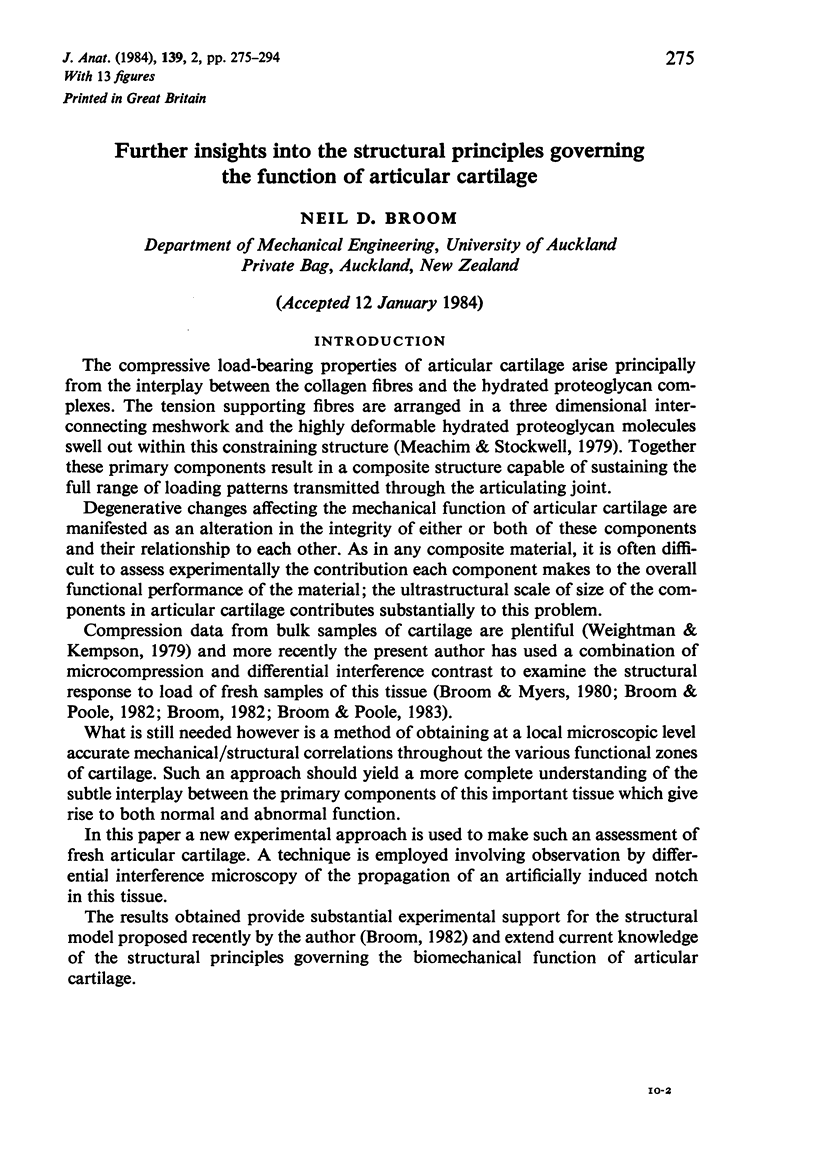
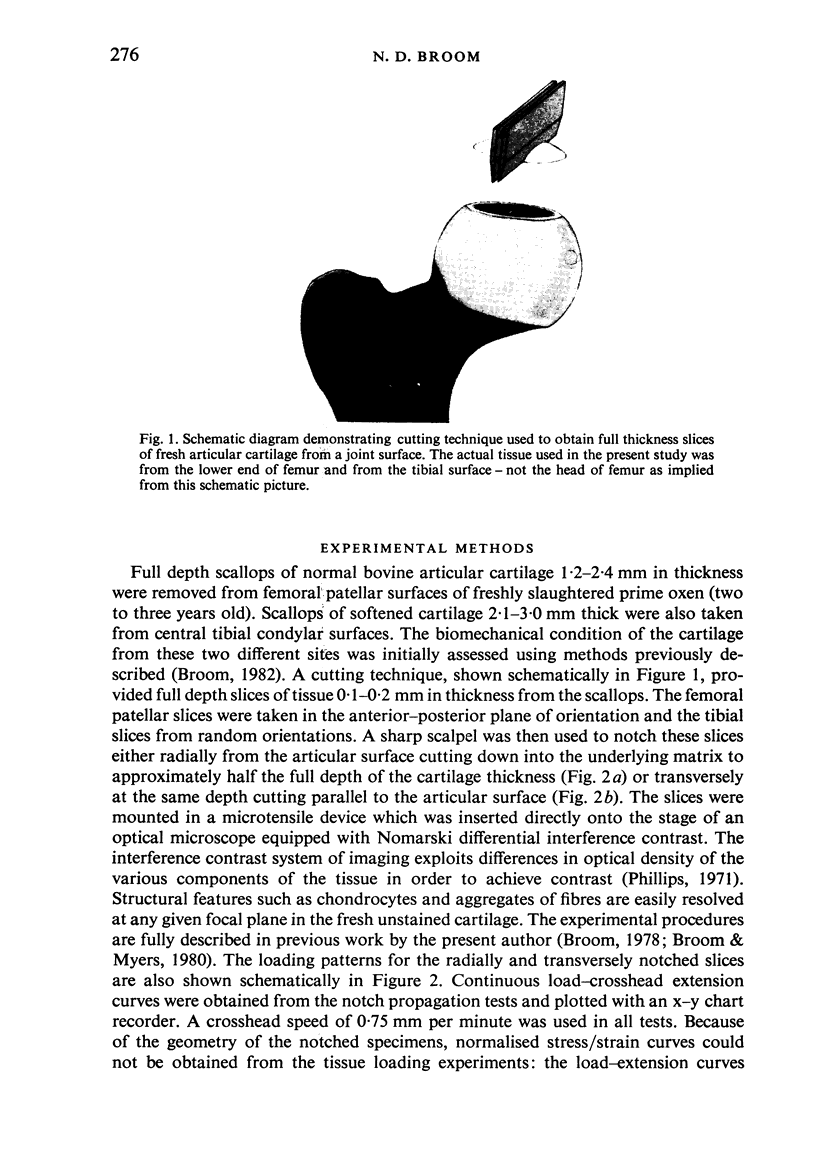
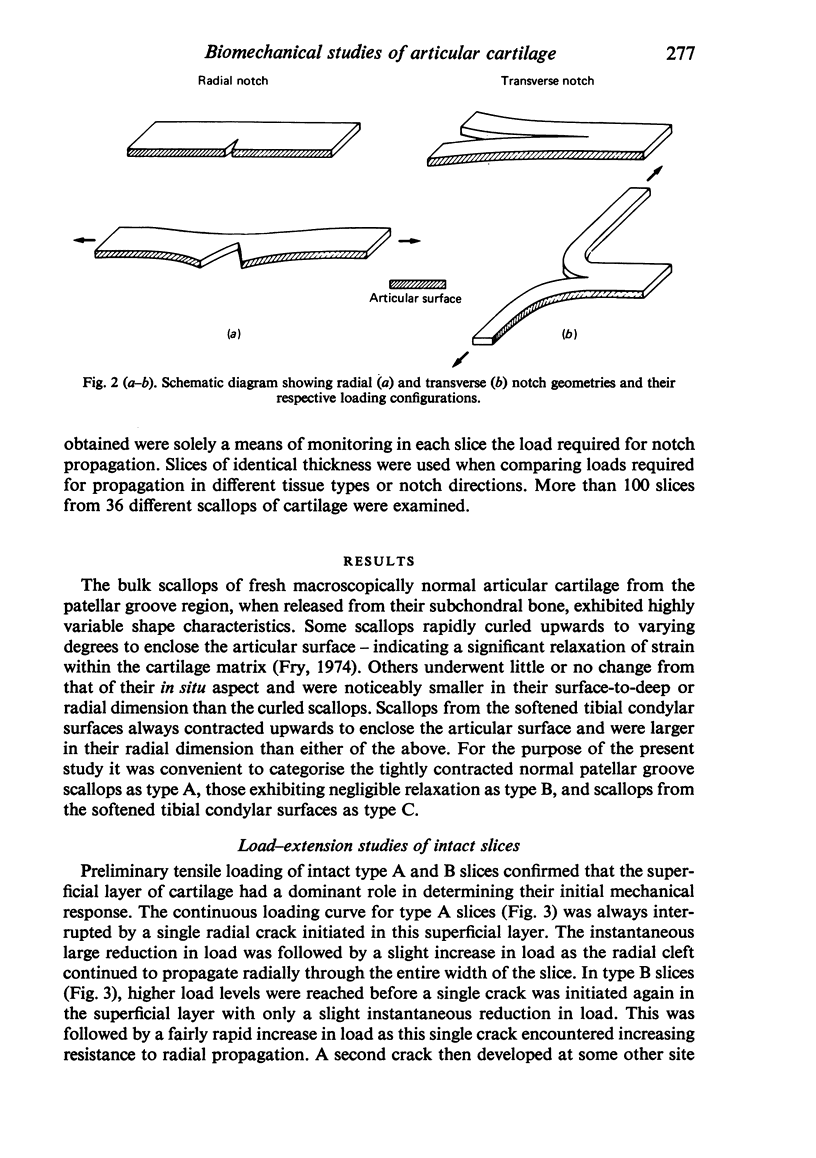
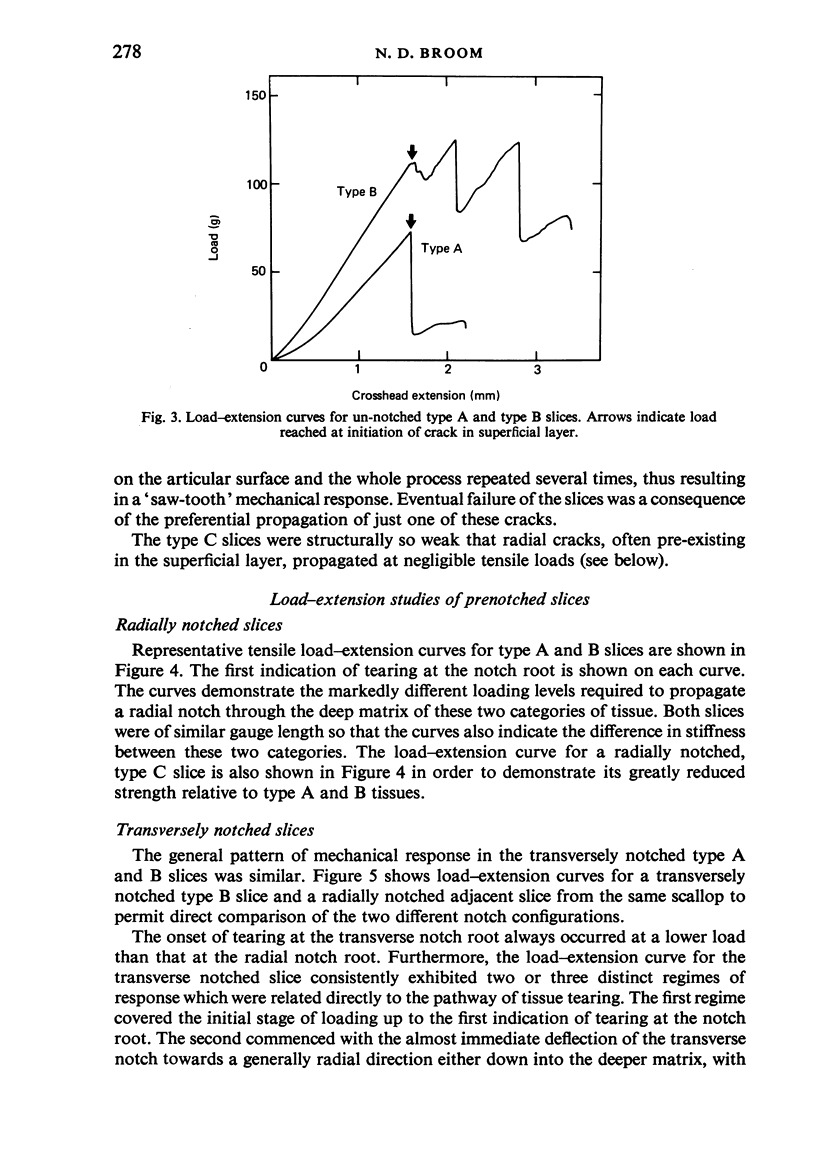
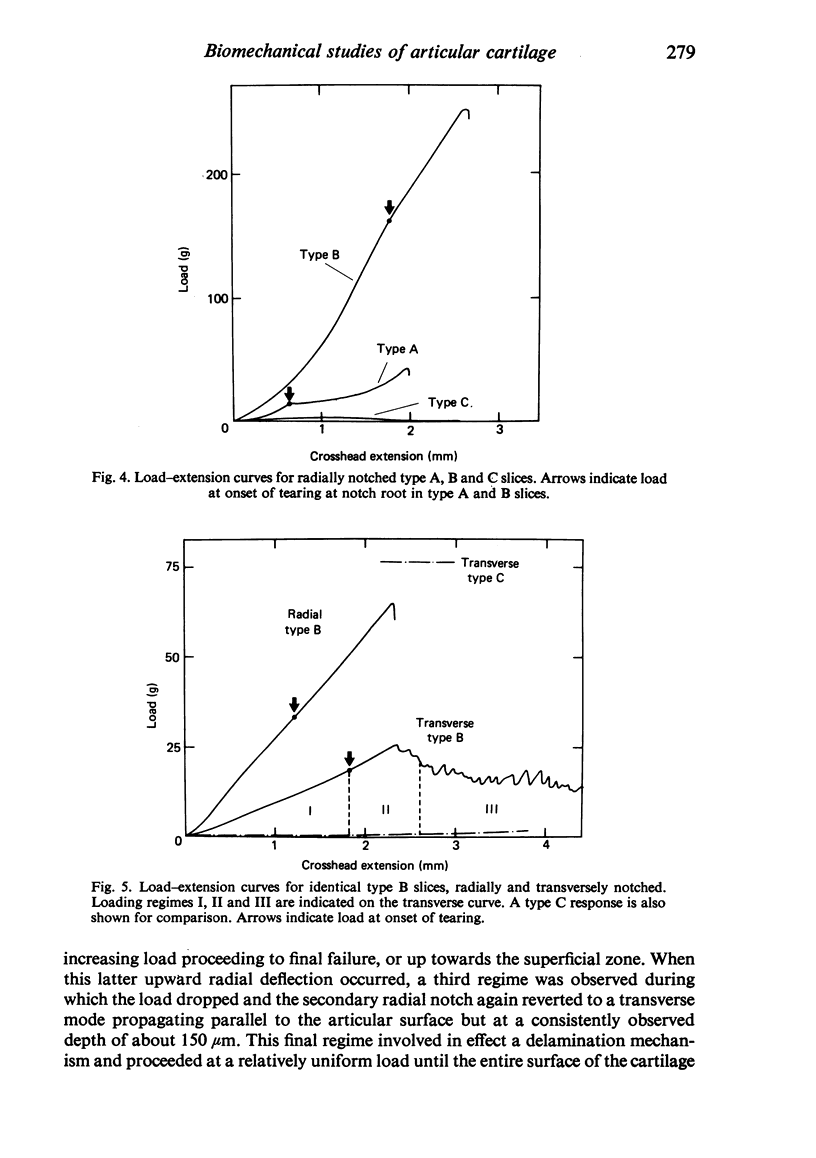
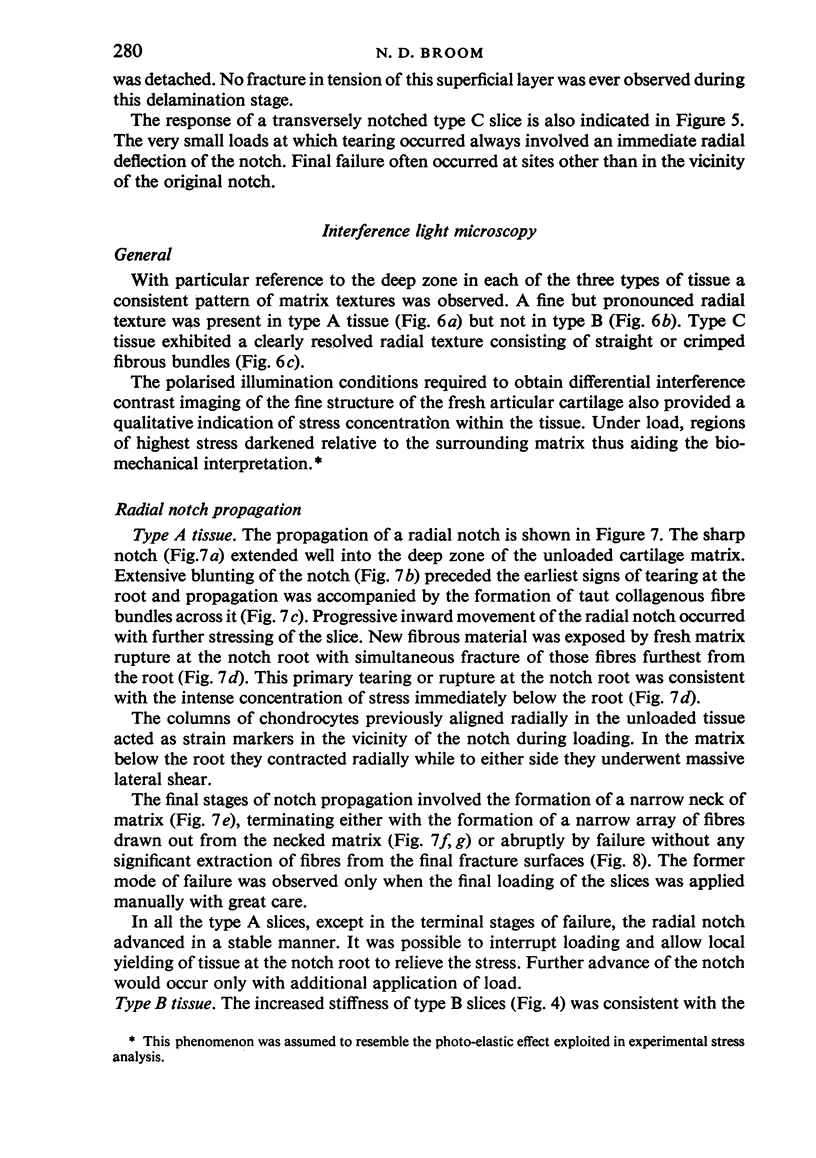
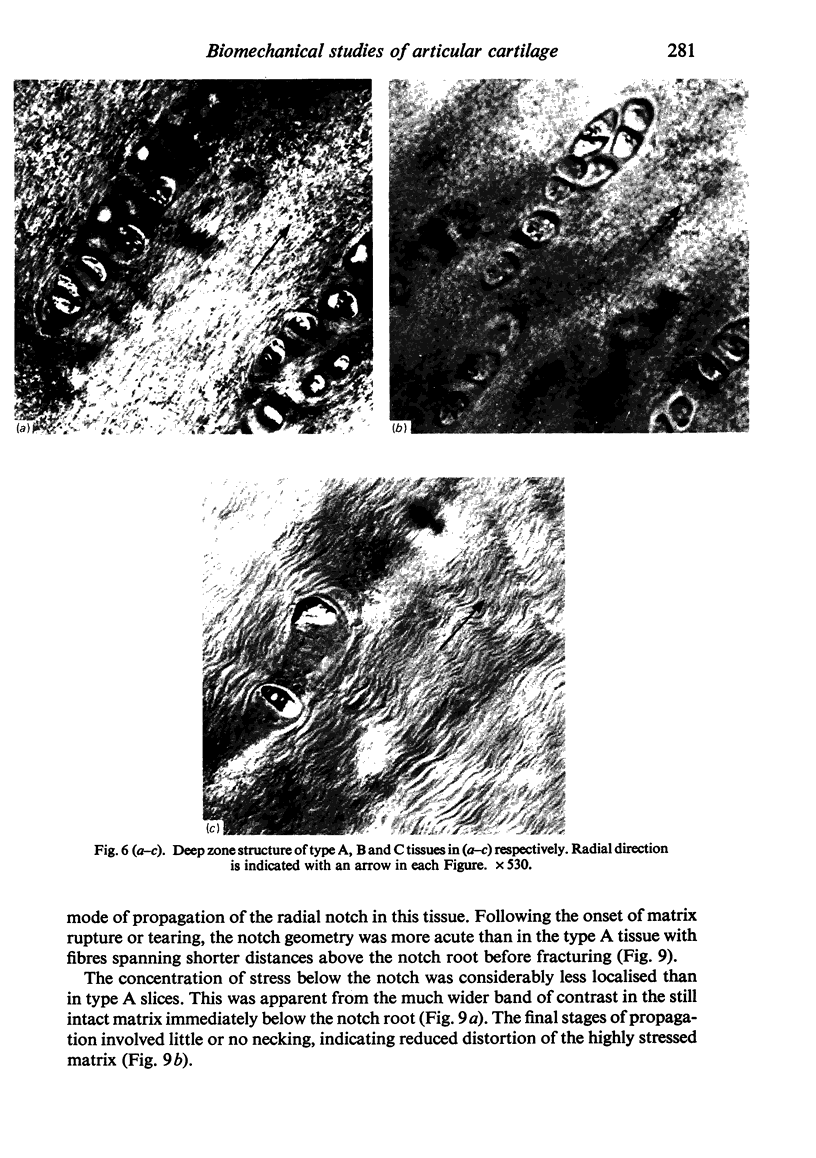
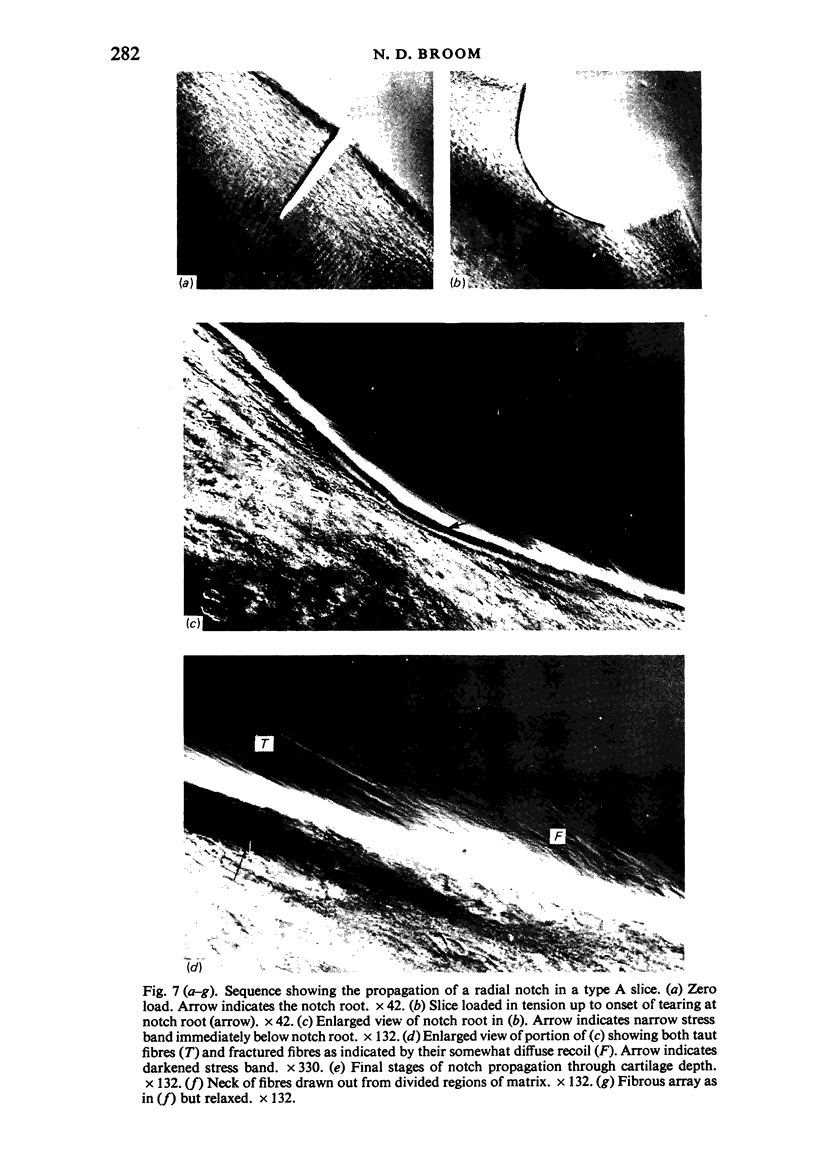
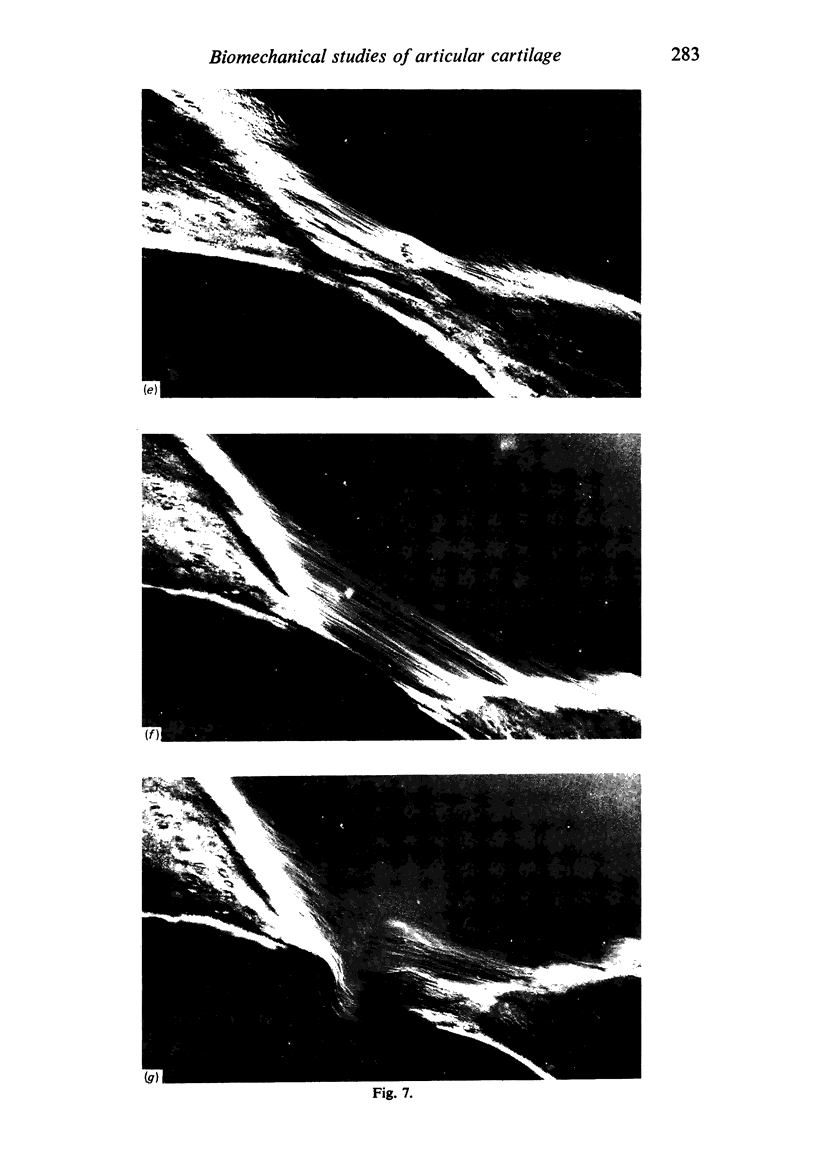
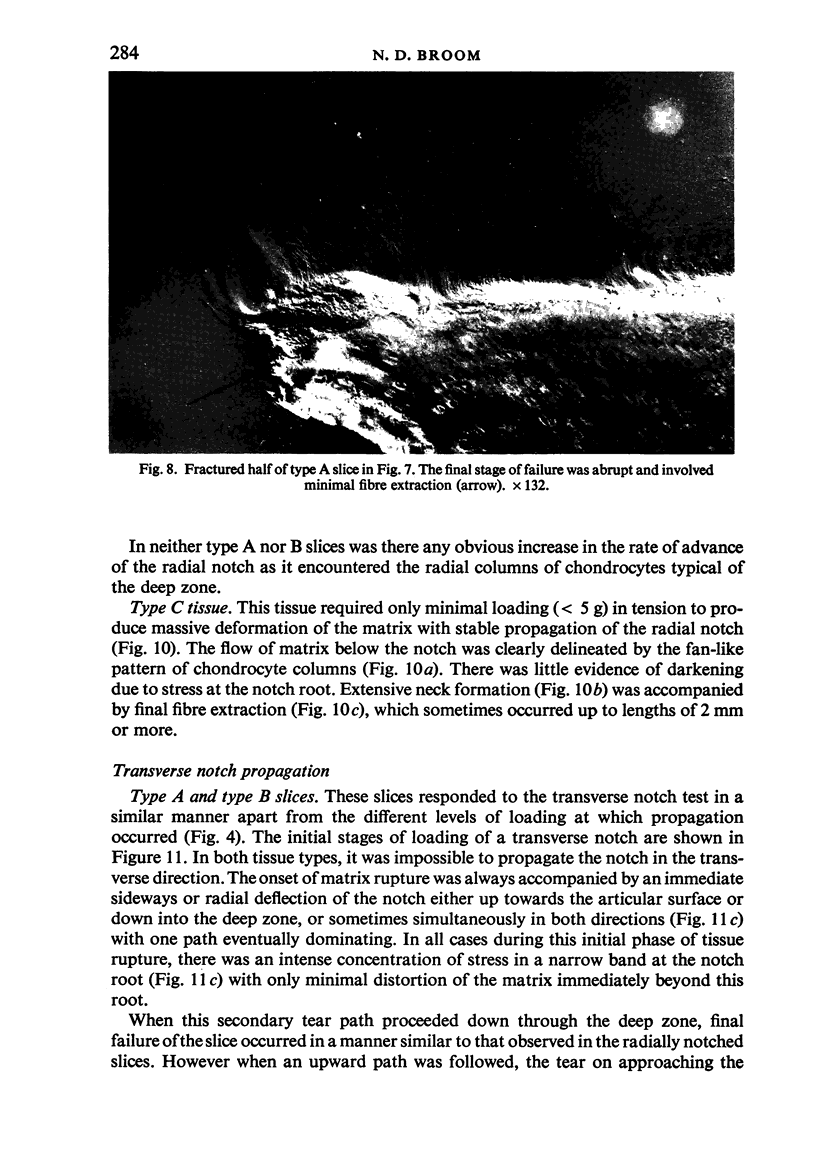
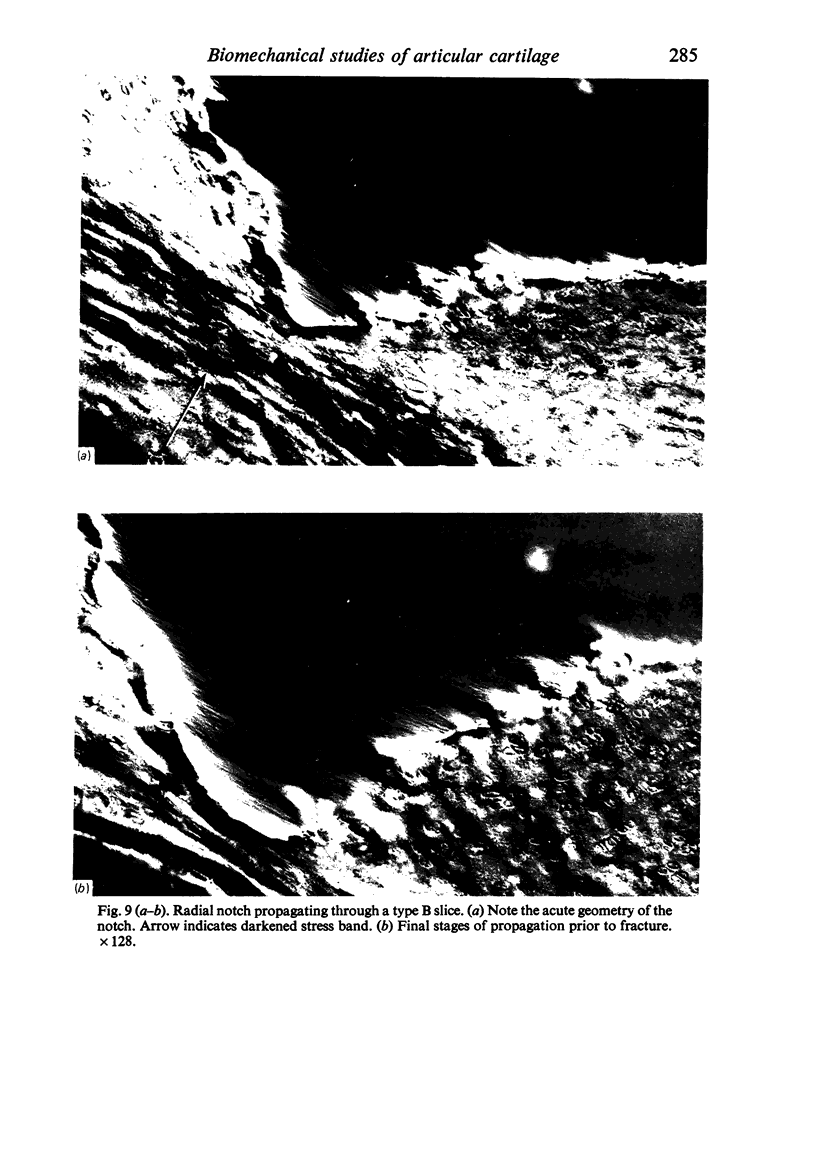
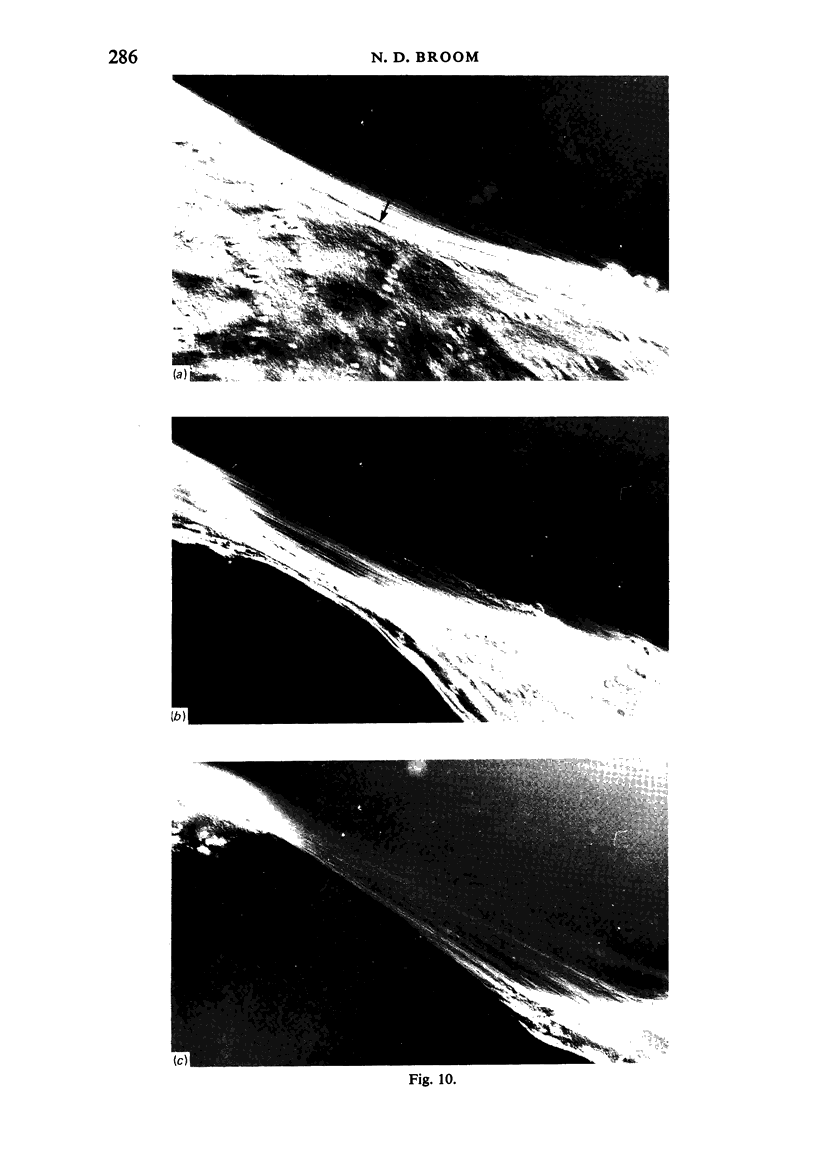
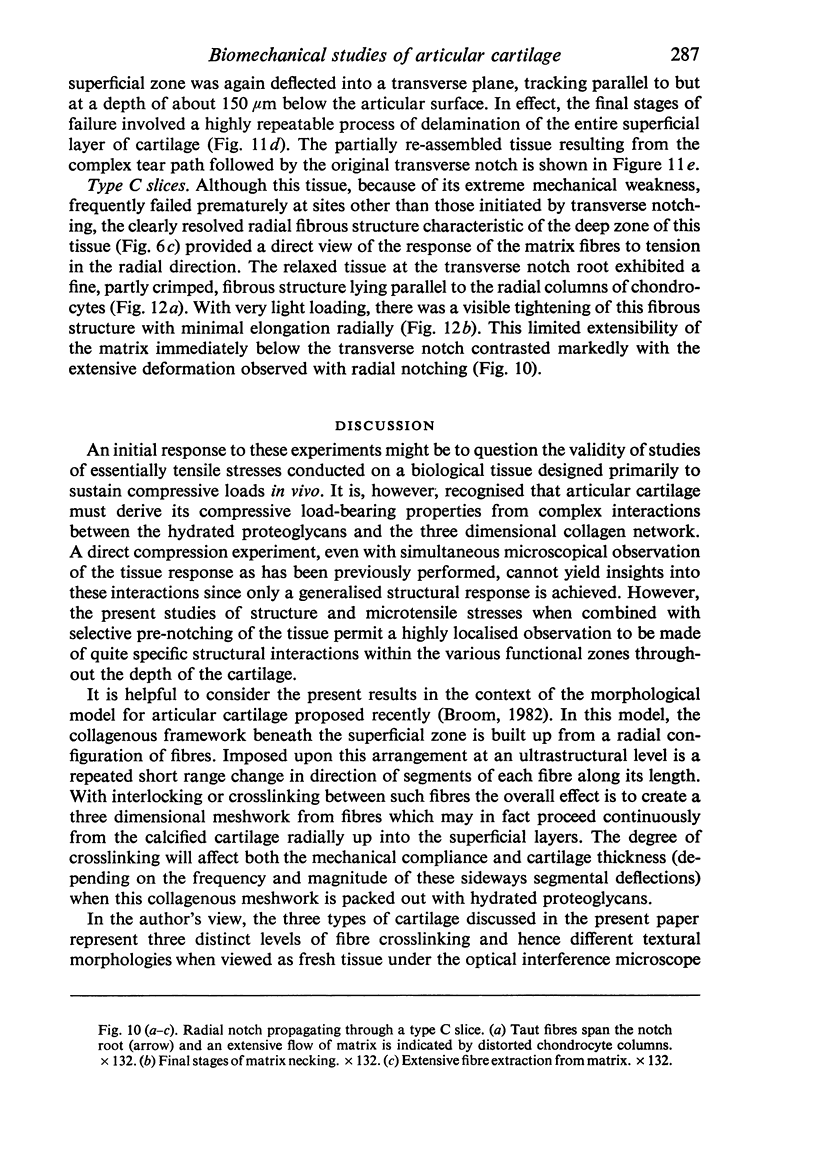
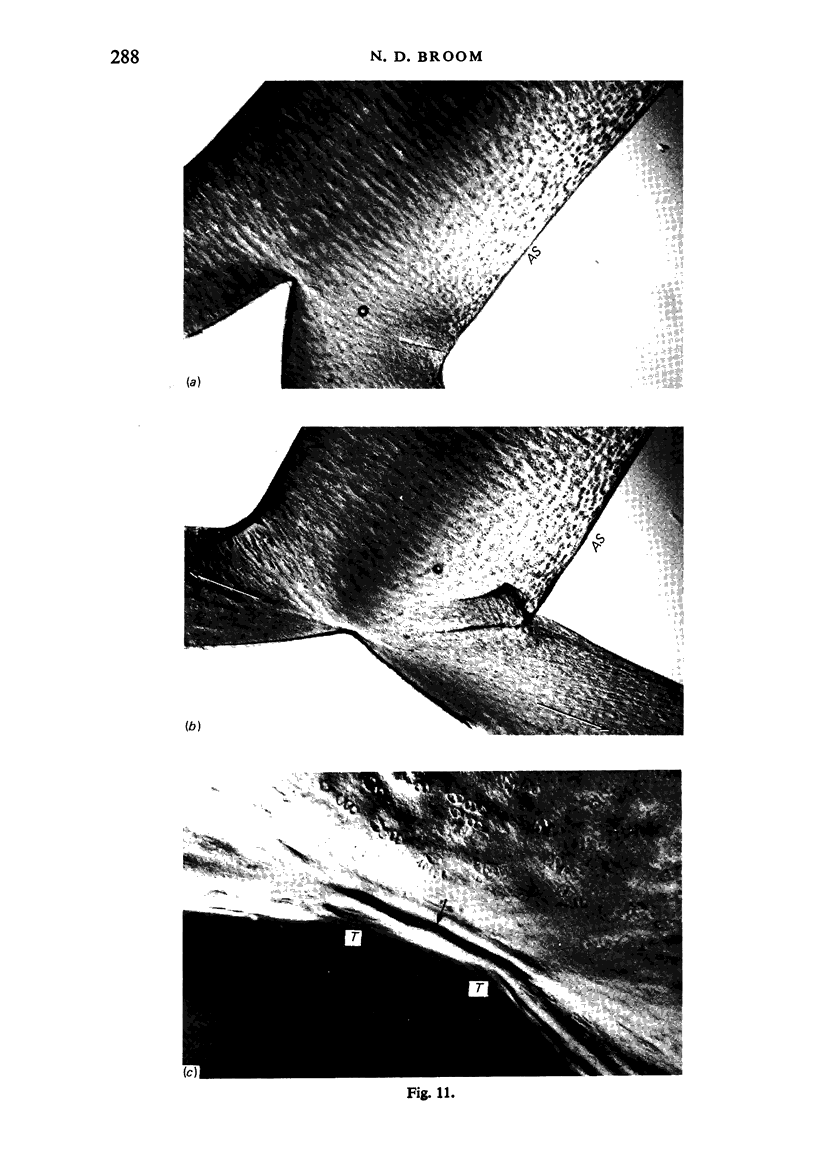
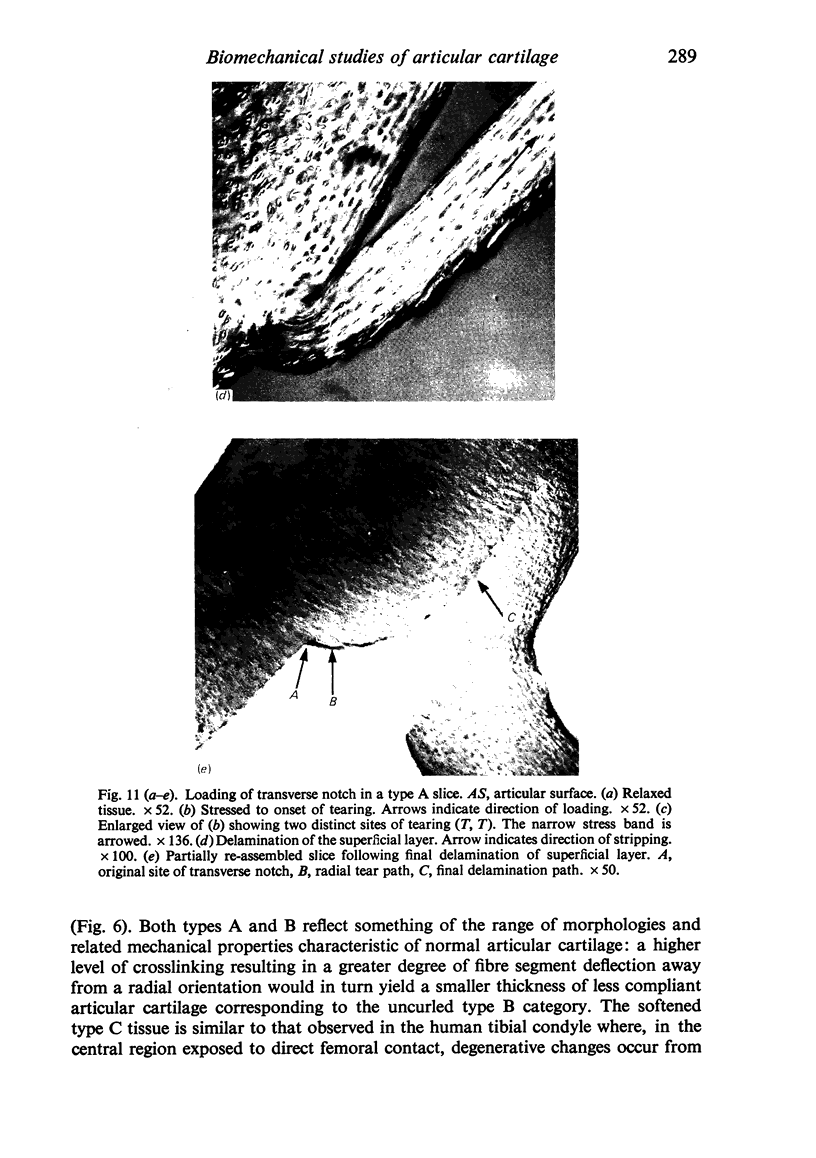
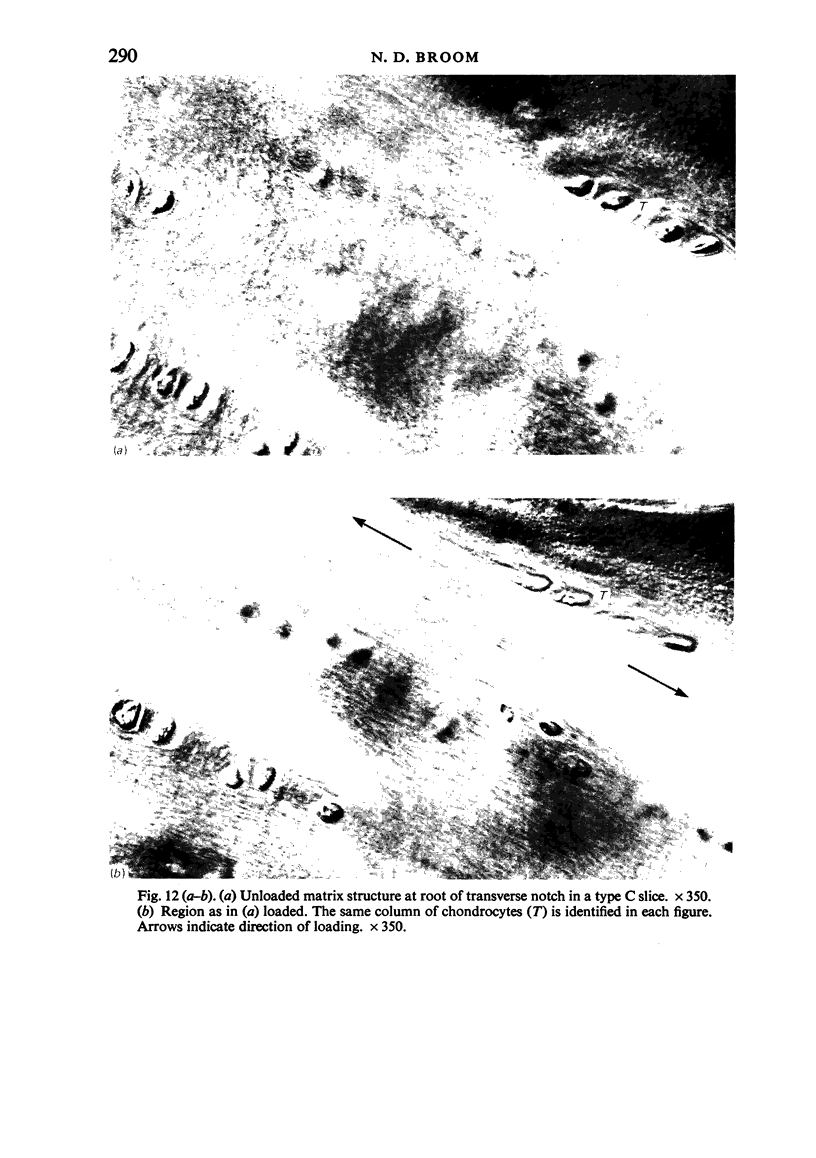
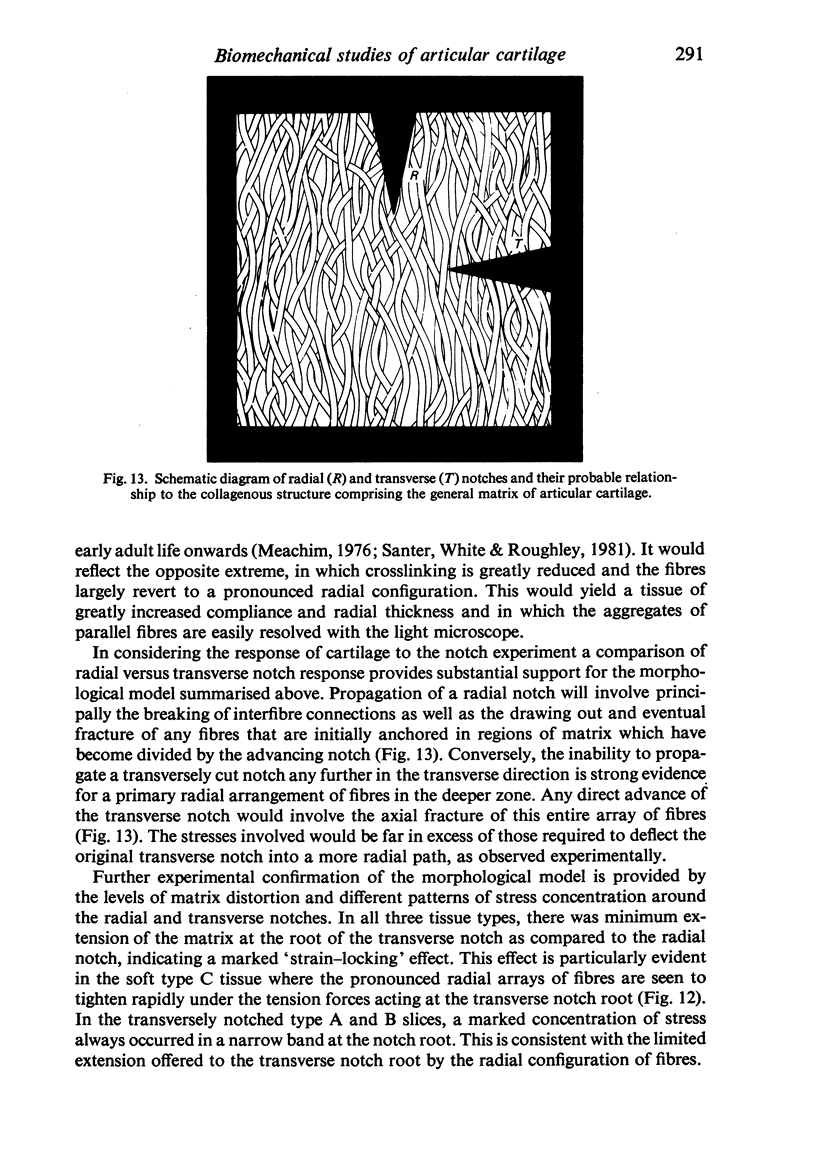
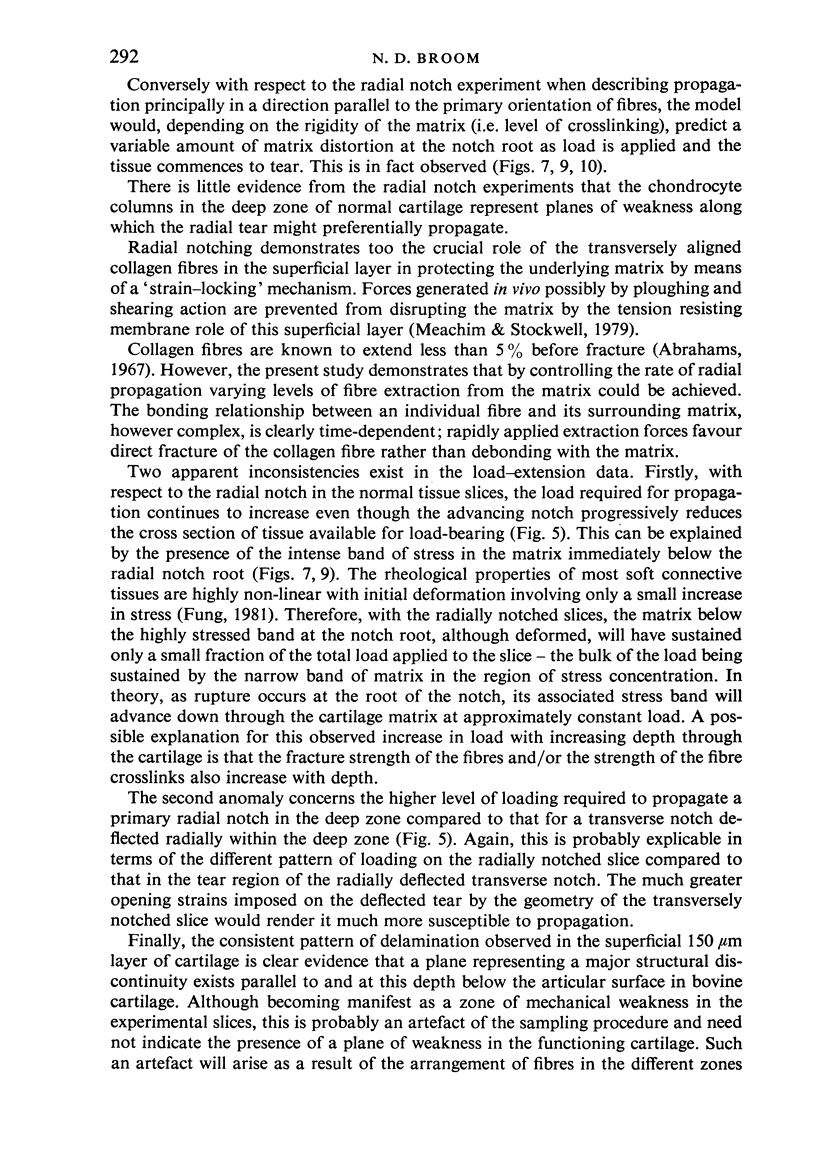

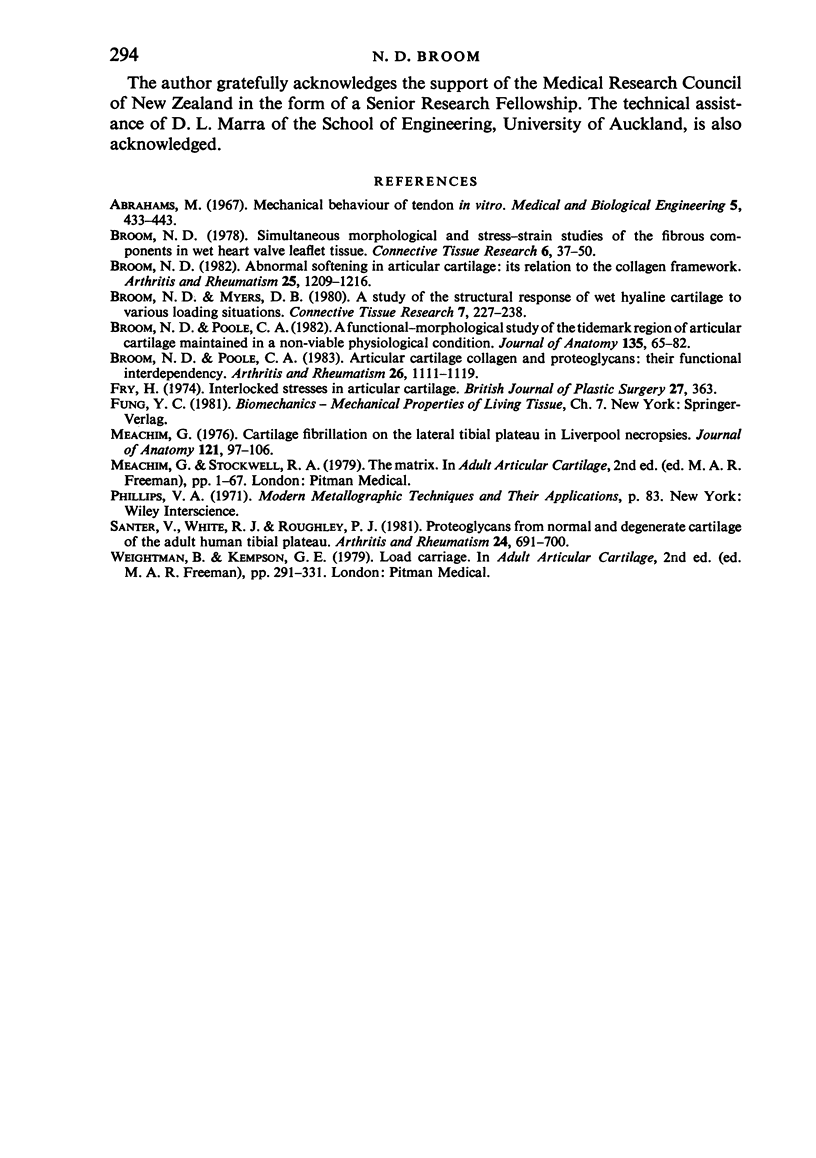
Images in this article
Selected References
These references are in PubMed. This may not be the complete list of references from this article.
- Abrahams M. Mechanical behaviour of tendon in vitro. A preliminary report. Med Biol Eng. 1967 Sep;5(5):433–443. doi: 10.1007/BF02479137. [DOI] [PubMed] [Google Scholar]
- Broom N. D. Abnormal softening in articular cartilage: its relationship to the collagen framework. Arthritis Rheum. 1982 Oct;25(10):1209–1216. doi: 10.1002/art.1780251010. [DOI] [PubMed] [Google Scholar]
- Broom N. D., Myers D. B. A study of the structural response of wet hyaline cartilage to various loading situations. Connect Tissue Res. 1980;7(4):227–237. doi: 10.3109/03008208009152358. [DOI] [PubMed] [Google Scholar]
- Broom N. D., Poole C. A. A functional-morphological study of the tidemark region of articular cartilage maintained in a non-viable physiological condition. J Anat. 1982 Aug;135(Pt 1):65–82. [PMC free article] [PubMed] [Google Scholar]
- Broom N. D., Poole C. A. Articular cartilage collagen and proteoglycans. Their functional interdependency. Arthritis Rheum. 1983 Sep;26(9):1111–1119. doi: 10.1002/art.1780260909. [DOI] [PubMed] [Google Scholar]
- Broom N. D. Simultaneous morphological and stress-strain studies of the fibrous components in wet heart valve leaflet tissue. Connect Tissue Res. 1978;6(1):37–50. doi: 10.3109/03008207809152285. [DOI] [PubMed] [Google Scholar]
- Fry H. J. The interlocked stresses of articular cartilage. Br J Plast Surg. 1974 Oct;27(4):363–364. doi: 10.1016/0007-1226(74)90040-x. [DOI] [PubMed] [Google Scholar]
- Meachim G. Cartilage fibrillation on the lateral tibial plateau in Liverpool necropsies. J Anat. 1976 Feb;121(Pt 1):97–106. [PMC free article] [PubMed] [Google Scholar]
- Santer V., White R. J., Roughley P. J. Proteoglycans from normal and degenerate cartilage of the adult human tibial plateau. Arthritis Rheum. 1981 May;24(5):691–700. doi: 10.1002/art.1780240510. [DOI] [PubMed] [Google Scholar]



